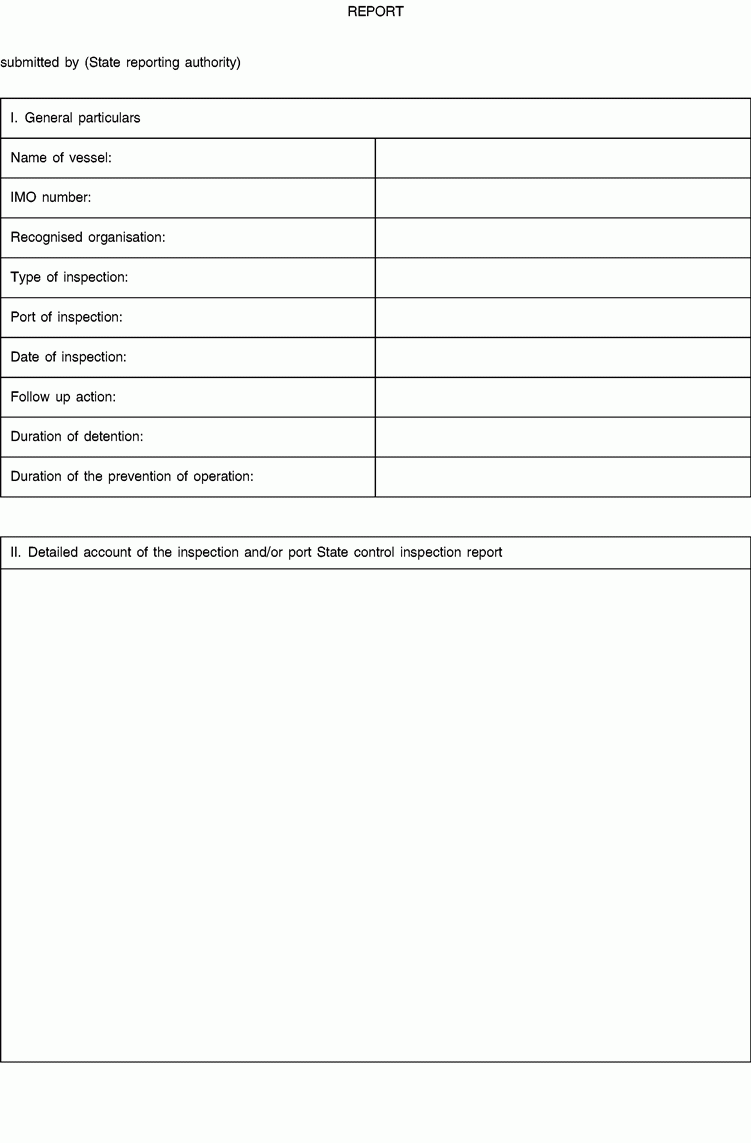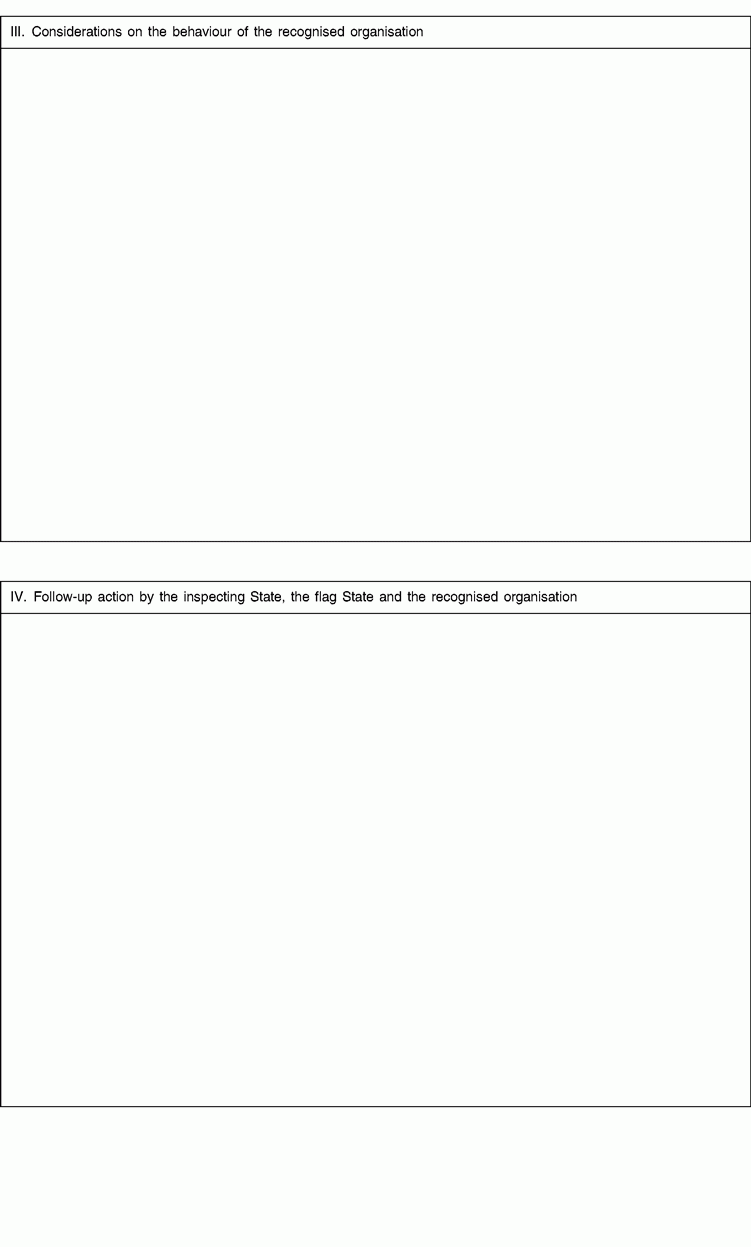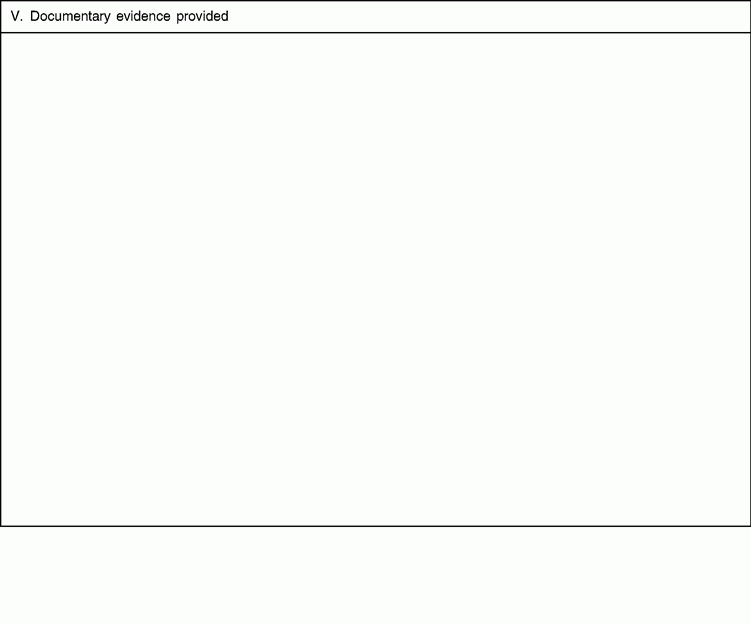THE COMMISSION OF THE EUROPEAN COMMUNITIES,
Having regard to the Treaty establishing the European Community,
Having regard to Council Directive 94/57/EC of 22 November 1994 on common rules and standards for ship inspection and survey organisations and for the relevant activities of maritime administrations, and in particular Article 9(2) thereof,
Whereas:
- Where a Member State decides, with respect to ships flying its flag, either to authorise organisations to undertake fully or in part inspections and surveys related to certificates in accordance with the relevant international conventions and, where appropriate, to issue or renew the related certificates, or to rely upon organisations to undertake fully or in part the said inspections and surveys, it shall entrust these duties only to organisations recognised in accordance with Article 4 of Directive 94/57/EC.
- A good record of safety and pollution prevention performance of a recognised organisation - measured in respect of all ships classed by it, irrespective of the flag they fly - is an important indication of the performance of that organisation.
- The safety and pollution prevention performance records of recognised organisations must be derived from the data produced by the Paris Memorandum of Understanding on Port State Control and/or by similar schemes. Other indications may be derived from an analysis of the casualties involving ships classed by the recognised organisations.
- Since recognised organisations operate all over the world, it is appropriate that their performance records are based on a sufficiently wide geographical area.
- Both the United States Coast Guard and the Tokyo Memorandum of Understanding on Port State Control periodically publish data based on port State control in a similar way to the Paris Memorandum of Understanding. They should be considered comparably reliable sources in terms of continuity and accuracy of data from which to derive an assessment of the safety and pollution prevention performance records of recognised organisations.
- The data published by the Paris Memorandum of Understanding, the Tokyo Memorandum of Understanding and the United States Coast Guard are subject to prior appeal mechanisms, allowing the recognised organisations concerned to contest them. Those data should, therefore, be considered as sufficiently reliable sources and should be used for the establishment of the assessment criteria as to the safety and pollution prevention performance of recognised organisations.
- Analysis of records on the detention of ships should, where such information is available, take specific account of recognised organisation-related detentions. It should also be designed in such a way as to reduce the risk that small and/or flag-specific populations, as may be the case of fleets classed by certain organisations with limited recognition, give rise to statistical distortions.
- Data sources must be transparent, impartial and capable of providing sufficiently reliable, exhaustive and continuous data. Therefore, in the absence of sufficiently complete public sources, data on marine casualties may be obtained from commercial data sources and taken into consideration provided that reasonable assurance can be gained that the aforementioned criteria are met.
- Reports produced by Member States on the basis of Article 12 of Directive 94/57/EC should also be taken into consideration in assessing the safety and pollution prevention performance records of the organisations.
- A recognised organisation’s safety and pollution prevention records, including other indications such as marine casualties, should be assessed with a view to allowing the adoption of fair and proportionate decisions based on the organisation’s structural capacity to meet the highest professional standards. It is therefore necessary to compare these records over a reasonable period of time.
- In order to guarantee the usefulness and fairness of the assessment system, it is necessary to allow a reasonable period of time for recognised organisations to take it into account in their management decisions, while at the same time giving the Commission the opportunity to evaluate its functioning and, as appropriate, make the necessary adjustments.
- The measures provided for in this Decision are in accordance with the opinion of the Committee on Safe Seas and the Prevention of Pollution from Ships,
HAS ADOPTED THE FOLLOWING DECISION:
For the purpose of this Decision:
The criteria to be followed in order to decide when the performance of an organisation acting on behalf of Administration can be considered an unacceptable threat to safety and the environment are set out in Annex I.
Article 3
1. The Administration, in determining whether an organisation acting on behalf of the Administration must be considered an unacceptable threat to safety and the environment may, in addition to the criteria set out in Annex I, take into account the cases where:
- it has been proven in a court of law or in an arbitration procedure that a marine casualty involving a ship in the class of a recognised organisation has been caused by a wilful act or omission or gross negligence of such recognised organisation, its bodies, employees, agents or others who act on its behalf; and
- it can be considered, based on the information available to the Administration, that such wilful act, omission or gross negligence has been due to shortcomings in the organisation’s structure, procedures and/or internal control.
2. The Administration shall take into account the gravity of the case, and shall seek to determine whether recurrence or any other circumstances reveal the organisation’s failure to remedy the shortcomings referred to in paragraph 1 and improve its performance.
1. Deleted
2. The Minister may by Regulations, amend Annex I in order to:
- adjust the said criteria to ensure their usefulness and fairness;
- determine the circumstances in which a recognised organisation’s authorisation may be suspended or withdrawn.
Article 5
In submitting reports to the Commission and to the other Member States in accordance with Article 12 of Directive 94/57/EC, the Member States shall make use of the harmonised form set out in Annex II.
Article 6
This Decision is addressed to the Member States.
Done at Brussels, 16 June 2009.
ANNEX I
1. PORT STATE CONTROL
1.1. Number of recognised organisation-related detentions in relation to total inspections over a three-year period
being
Ul = N · p + 0,5 + z · [N · p · (1 – p)]1/2
Uh = N · p – 0,5 – z · [N · p · (1 – p)]1/2
where
1.1.1. Paris MOU
| n > Ul | 6 points |
| Ul ≥ n ≥ Uh | 3 points |
| Uh > n | 0 points |
1.1.2. US Coast Guard
| n > Ul | 6 points |
| Ul ≥ n ≥ Uh | 3 point |
| Uh > n | 0 points |
1.1.3. Tokyo MOU
| n > Ul | 6 points |
| Ul ≥ n ≥ Uh | 3 points |
| Uh > n | 0 points |
If Uh < 0, then it is considered that Uh = 0.
If n = 0, then 0 points will be given, irrespective of the Uh value.
1.2. Percentage of recognised organisation-related detentions in relation to total number of inspections
1.2.1. Paris MOU
Annual - compared to previous three years
| increase | 1 point |
| unchanged | 0 point |
| decrease | – 1 point |
1.2.2. US Coast Guard
Annual - compared to previous three years
| increase | 1 point |
| unchanged | 0 points |
| decrease | – 1 point |
1.2.3. Tokyo MOU
Annual - compared to previous three years
| increase | 1 point |
| unchanged | 0 points |
| decrease | – 1 point |
When a recognised organisation presents a 0 % detention rate for two consecutive periods, it will be considered a positive performance and the same number of points as for a decrease in the detention rates will be given.
1.3. Number of detentions in relation to total number of inspections over a three-year period
being
Ul = N · p + 0,5 + z · [N · p · (1 – p)]1/2
where
1.3.1. Paris MOU
| n > Ul | 1 point |
| Ul ≥ n | 0 points |
1.3.2. US Coast Guard
| n > Ul | 1 point |
| Ul ≥ n | 0 points |
1.3.3. Tokyo MOU
| n > Ul | 1 point |
| Ul ≥ n | 0 points |
1.4. Two recognised organisation-related detentions of the same ship over the last 12 months (annual; as per Paris MOU, US Coast Guard and Tokyo MOU)
| Number of cases | points |
|---|---|
| 1 or 2 | 1 per ship |
| 3 to 5 | 2 per ship |
| > 5 | 3 per ship |
1.5. Two recognised organisation-related detentions of the same ship over the last 24 months (annual, for the last 24 months; as per Paris MOU, US Coast Guard and Tokyo MOU)
1 point for every ship. Occurrences already counted under 1.4 are excluded.
1.6. Three or more recognised organisation-related detentions of the same ship over the last 24 months (annual, for the last 24 months; as per Paris MOU, US Coast Guard and Tokyo MOU)
3 points for every ship - adding to points allocated under 1.4 or 1.5
1.7. Difference in performance for black listed and white listed flags (recognised organisation-related detentions - rate as per Paris MOU)
Percentage point difference
| > 2 | + 3 points |
| 1 – 2 | + 2 points |
| 0,5 – 1 | + 1 point |
| < 0,5 | – 1 point |
Where there is not sufficient data for the calculation of the difference in performance for a recognised organisation, then 0 points will be attributed.
2. REPORTS FROM MEMBER STATES
1 point for every reported case up to a maximum of 3 points.
ANNEX II
REPORT in accordance with Article 12 of Council Directive 94/57/EC
‘In exercising their obligations as port States, Member States shall report to the Commission and other Member States, and inform the flag State concerned, the discovery of the issue of valid certificates by organisations acting on behalf of a flag States to a ships which does not fulfil the relevant requirements of the international conventions, or of any failure of a ship carrying a valid class certificate and relating to items covered by that certificate. Only cases of ships representing a serious threat to safety and the environment or showing evidence of particularly negligent behaviour of the organisations shall be reported for the purpose of this Article. The recognised organisation concerned shall be advised of the case at the time of the initial inspection so that it can take appropriate follow-up action immediately.’
For the purpose of identifying the cases in which failures by the recognised organisation (hereinafter RO) to detect serious defects in the conditions of the surveyed vessels shall be reported to the Commission, the other Members States and the flag State concerned, the following criteria shall be applied:
- suspension, withdrawal or conditional endorsement of the safety certificate by the flag State; or
- prevention of operation under Council Directive 1999/35/EC or a detention order under Council Directive 95/21/EC being issued by the host or the port State where deficiencies cannot be repaired in less than five days.
The report shall include an account of the case detailing why the above criteria were considered met.
The following evidence material should also be attached where applicable:
The attached format shall be used for reporting.
The report shall be forwarded to the European Commission, EMSA and all Member States.



